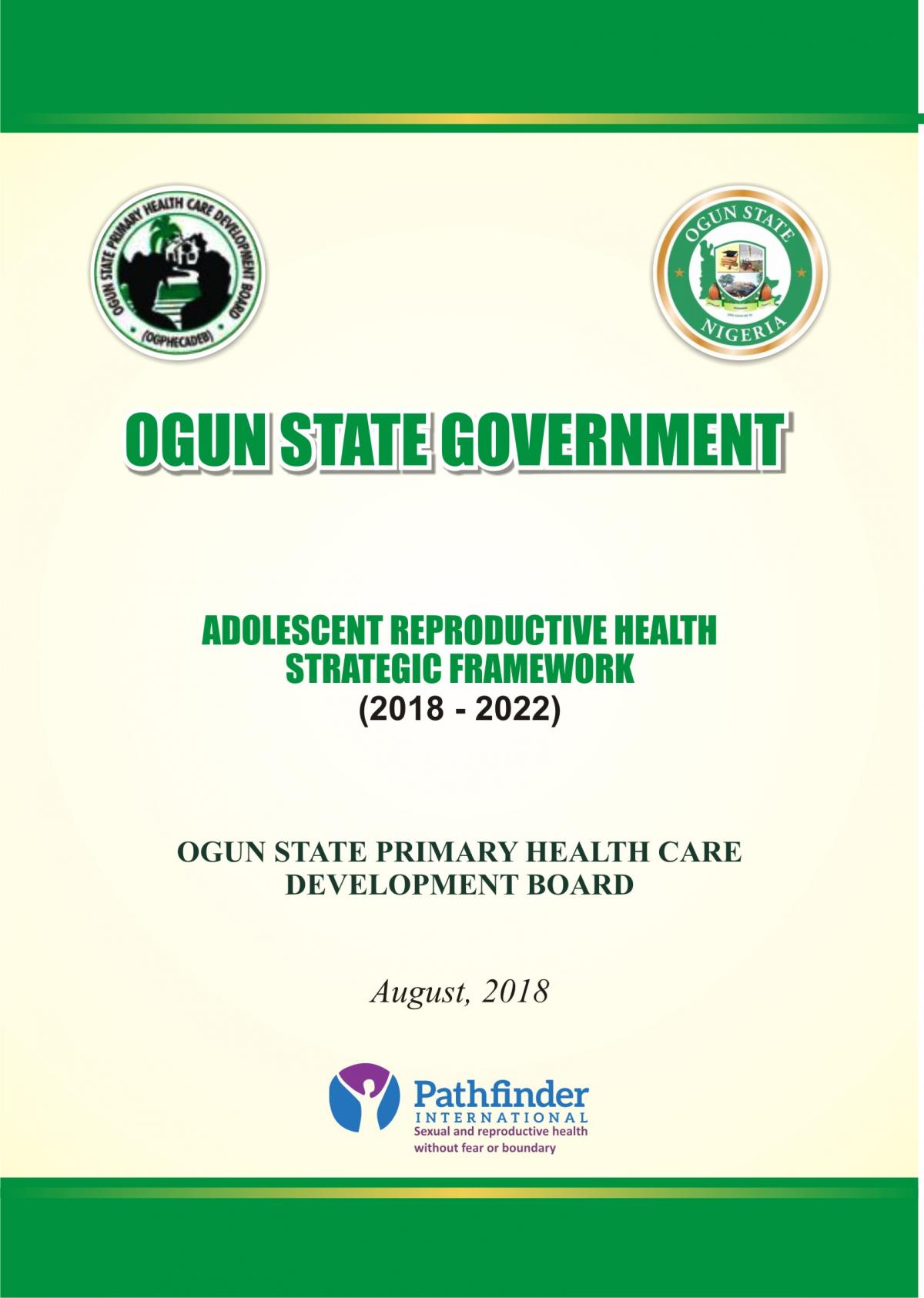
In February 2019, the Ogun State Primary Health Care Development Board launched an Adolescent Reproductive Health Strategic Framework (2018-2022). The framework aims to increase access to sexual and reproductive health (SRH) information and services for all adolescents and young people in the state by 2022. It also facilitates stronger coordination of adolescent SRH across relevant state ministries, departments, and agencies.
Located in southwestern Nigeria, Ogun State is home to about 1.2 million adolescents and young people, who make up nearly one-third (30.7%) of the state’s 3.8 million inhabitants [1]. Many of these adolescents lack access to SRH services, including family planning. In a 2015 study of young people aged 12 to 24 years-old, both in- and out-of-school, the state ministry of health found good knowledge of family planning, but poor uptake, with only 36.2% of sexually-active respondents reporting regular contraceptive use [2]. The study also revealed that most respondents sought SRH information from their peers and the media, with 3.5% receiving such information from health providers.
The state ministry of health established a dedicated desk officer for adolescent reproductive health in 2010. But in the nine years since its creation, the office lacked a dedicated budget and thus could not independently implement any activities. As a result, adolescents were not prioritized in the state’s programs and services.
With support from Advance Family Planning’s local partner in Nigeria, Pathfinder International, and in collaboration with The Challenge Initiative, the Ogun State advocacy working group took on the issue.
First, they asked the state’s Commissioner for Health to authorize a rapid assessment of the barriers to adolescent and youth access to SRH information and services in the state. Conducted in June 2018, the assessment revealed that only five youth-friendly health centers existed in Ogun and 0.2% of all adolescents and young people accessed family planning services, according to health facility records [3].
Next, the youth wing of the advocacy working group informed the state ministry of health about the need to have a multi-sectoral strategic framework geared towards ensuring that Ogun has a plan for addressing the special needs of this segment of its population.
That same month (June 2018), the government agreed. They constituted a 35-member technical working group to develop an all-inclusive youth SRH strategy, with representatives from various ministries (e.g. ministries of justice, education, and women’s affairs), civil society organizations, and development partners. Half of the working group’s membership were young people.
The technical working group members worked together to produce a draft framework covering strategic priority areas—including pregnancy prevention and care, the prevention of sexually transmitted infections, and health promotion—and defining each stakeholder’s roles and responsibilities. The document was validated in July 2018, approved by the commissioner for health in December 2018, and formally launched in February 2019.
With the framework in place, the state advocacy working group and partners will now advocate for dedicated adolescent SRH funding and continue to build strategic partnerships to effectively implement the framework’s interventions.
References
- National Population Commission, Population and Housing Census 2006, available at http://nigeria.opendataforafrica.org/xspplpb/nigeria-census.
- E.A. Ogunsola and A. Oniyitan. Sources of Contraceptive Information among Young People in Ogun State, Southwest Nigeria (2015).
- Ogun State Ministry of Health, Adolescent Reproductive Health Strategic Framework (2018-2022).

